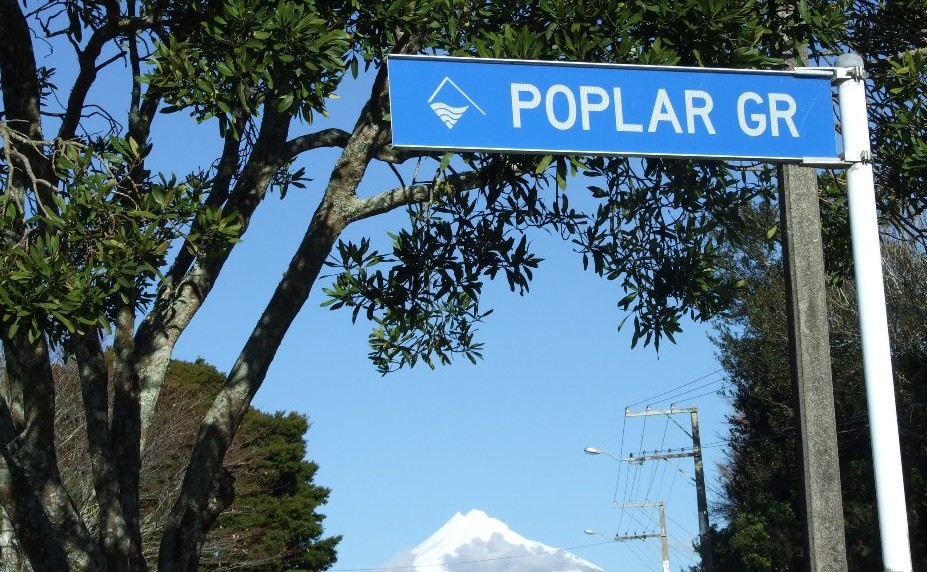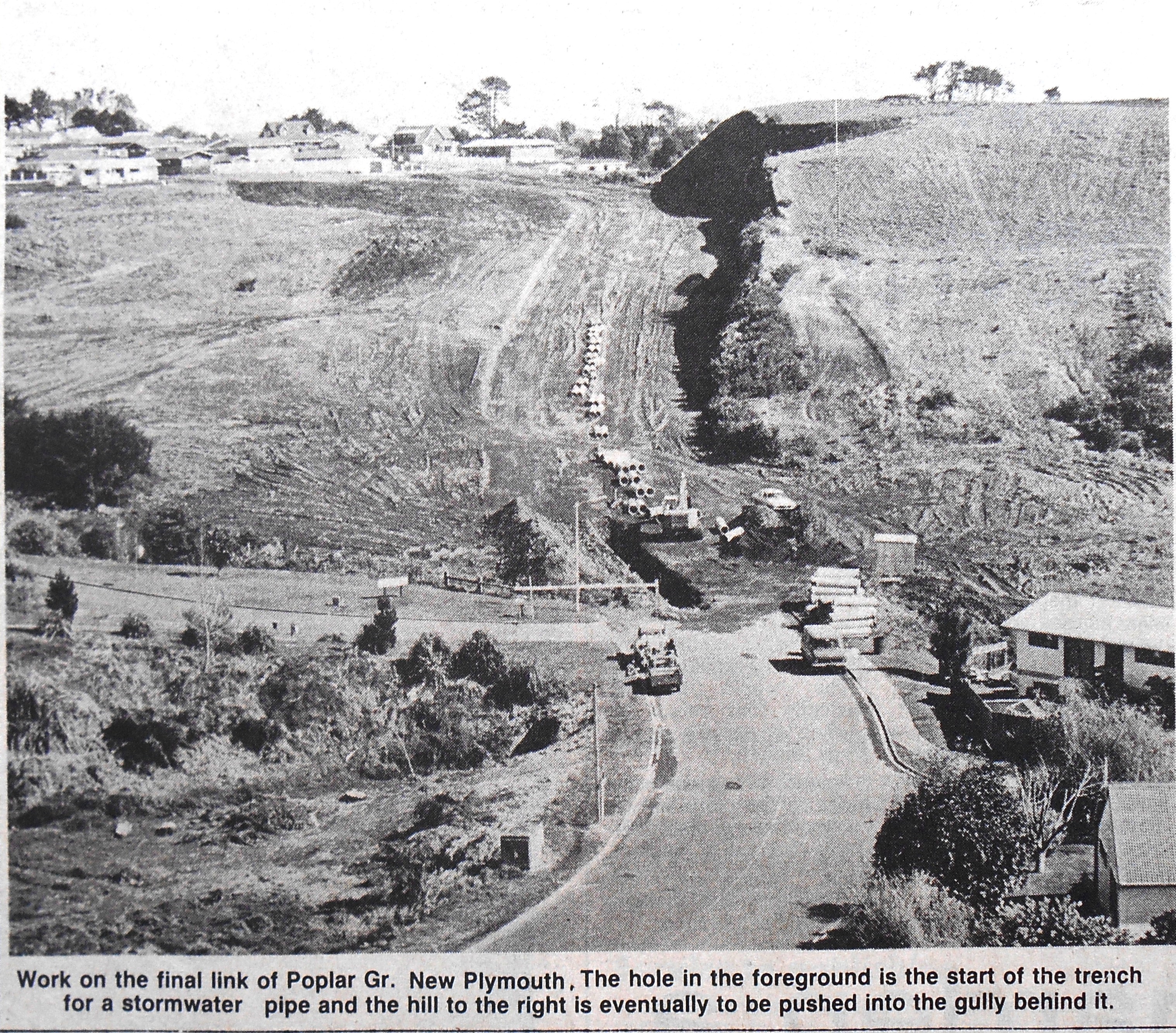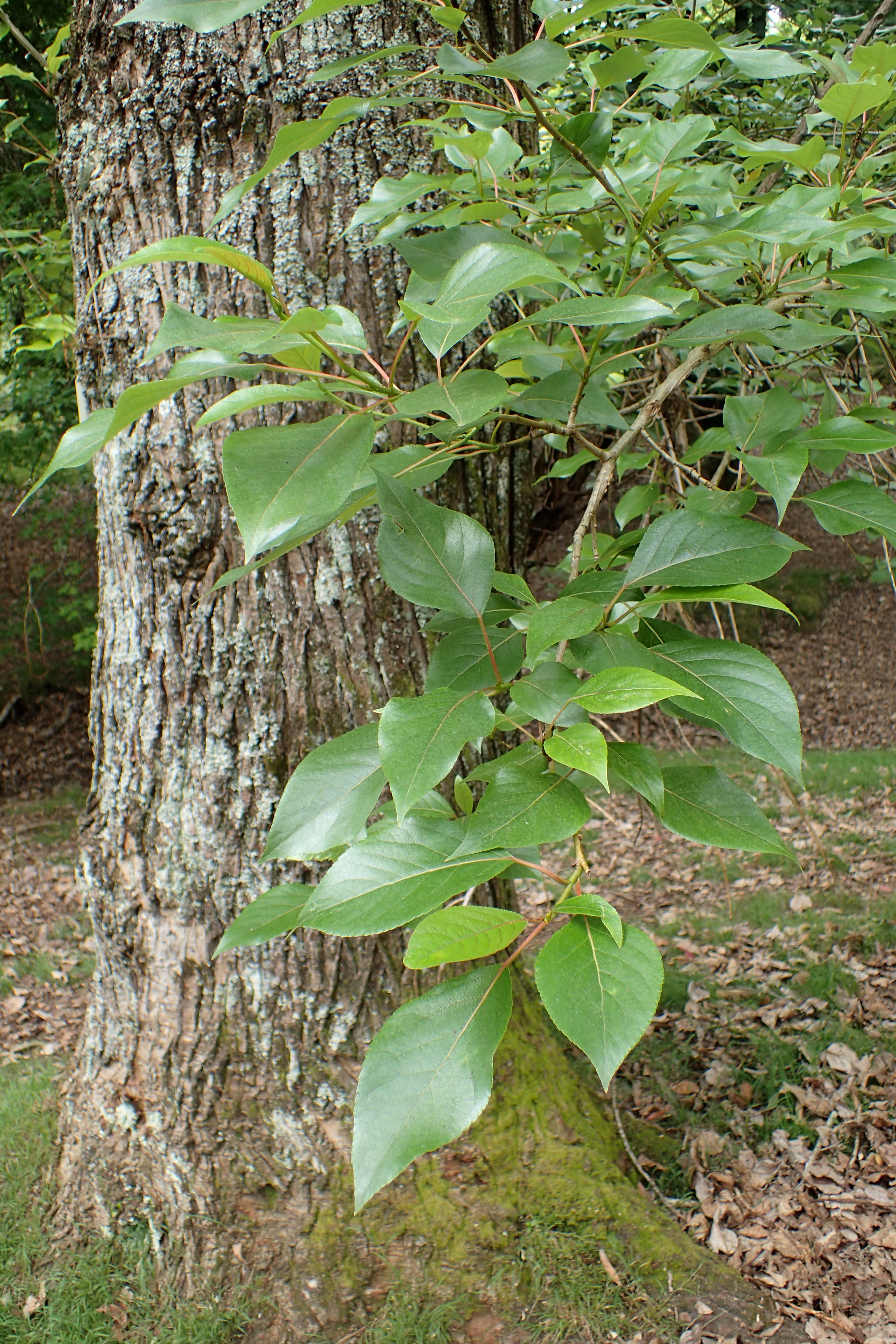









Poplar Grove takes its name from the extensive plantings of poplar trees in the area when the street was formed.
Poplars are classified in the genus Populus, and are deciduous flowering plants native to most of the northern hemisphere. First grown in New Zealand in the 1830s, they are known to be fast- growing on moist, fertile sites, and are easily grown from stem cuttings. Trees planted at a wide spacing allow pasture to continue growing between them.
Generally very tolerant trees, poplars do not like strong winds. Found scattered throughout Taranaki, they seem happiest in the eastern hill country slopes and gullies.
They are also ornamental. In the Populus species, the leaf petioles are laterally flattened so the leaves wobble back and forth easily, giving the whole tree a twinkling appearance in a breeze. The leaves turn bright gold to yellow before they fall during autumn.
The September 2006 issue of the magazine Science announced Populus trichocarpa, the western balsam poplar, as the first tree to have its full DNA code sequenced.
In the 1970s, poplar rust devastated mature trees throughout the New Zealand. Resistant strains were selected from plants at the Soil Conservation Centre in Aokautere, near Palmerston North, and were used to replace diseased trees.
Among the most successful resistant trees is the Chinese poplar, Populus yunnanensis. This species boasts leaves that flush bronze to greenish brown in spring, while turning bright yellow before dropping in July, later than other poplars.
Kunming Garden in Brooklands Park, a gift from Kunming, in Yunnan Province, celebrates New Plymouth's relationship with its Chinese sister city.
This story was originally published in the Taranaki Daily News.
Poplar Tree (17 May 2019), Encyclopaedia Britannica
LinkPlease do not reproduce these images without permission from Puke Ariki.
Contact us for more information or you can order images online here.